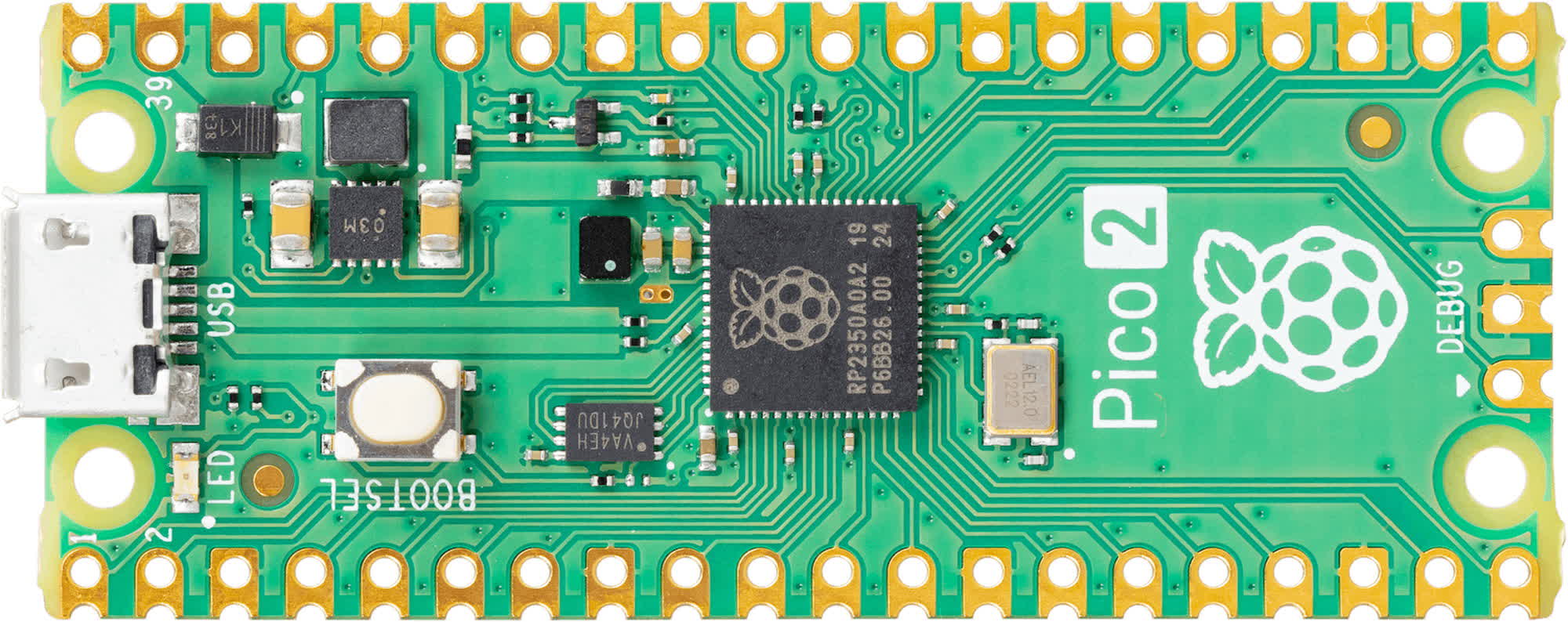Size Matters: The original Raspberry Pi Pico was released in January 2021 as the first Raspberry Pi board based on a single microcontroller chip design. The Raspberry Pi Foundation is now launching an improved version of the device, adding unexpected capabilities and addressing a long-observed lack of data security.
The Raspberry Pi Pico 2 is based on the RP2350 microcontroller, costs just one dollar more than the original Raspberry Pi Pico, and offers a higher core clock speed, double the memory, more powerful Arm cores, and other upgrades you would expect from an improved hardware design. The new board also includes two additional RISC-V cores that are based on the Hazard3 open-source design, which, according to Raspberry Pi co-founder Eben Upton, is an entirely new development for the foundation.
The new Raspberry Pi Pico retains compatibility with earlier versions while delivering a "significant" overall performance boost. The chip now features two Cortex-M33 Arm cores, which come with additional computing elements such as FPU and DSP.
Hazard3 implements the RV32I instruction set, meaning that the cores support the base 32-bit RISC-V ISA instructions. Upton stated that Raspberry Pi aims to provide developers with a stable and well-supported environment for the RISC-V ISA, and Raspberry Pi boards are certainly a tried-and-tested technology in the embedded, DIY, and industrial microcontroller/SBC markets.

The Hazard3 design was developed by Luke Wren, one of Raspberry Pi's ASIC engineers, in his spare time. Upton stated that RISC-V, and the Hazard3 implementation in particular, can now be considered a mature chip technology worthy of integration into Raspberry Pi designs. The Hazard3 cores are "optional," meaning that developers must choose between RISC-V and Arm at boot time. Interestingly, a mixed configuration of one Arm Cortex-M33 core and one RISC-V Hazard3 core can also be used.
The RP2350 microcontroller embedded in the Raspberry Pi Pico 2 board introduces a "comprehensive security architecture," with support for Arm's TrustZone technology, a secure boot ROM, and more. Customers were reportedly dissatisfied with the lack of security features on the original microcontroller (RP2040), as they were unable to protect their proprietary code from prying eyes or external reverse engineering efforts.
The Raspberry Pi Pico 2 is priced at $5 per unit, while the original board was $4. Lone developers are unlikely to be concerned about the slight cost increase, but companies purchasing microcontrollers in bulk might be more cautious. However, Upton believes that the additional security features, combined with the enhanced performance of the RP2350 chip, will make the Raspberry Pi Pico 2 an attractive option for many industrial, IoT, and embedded applications.
